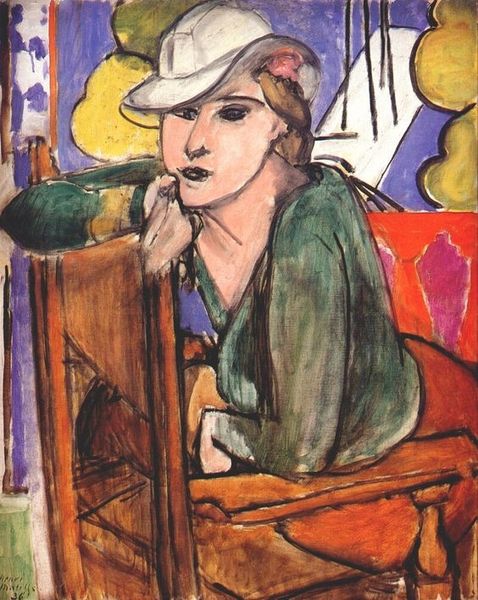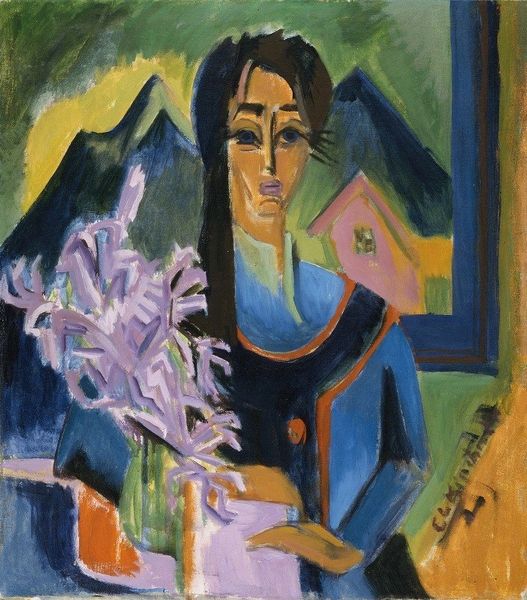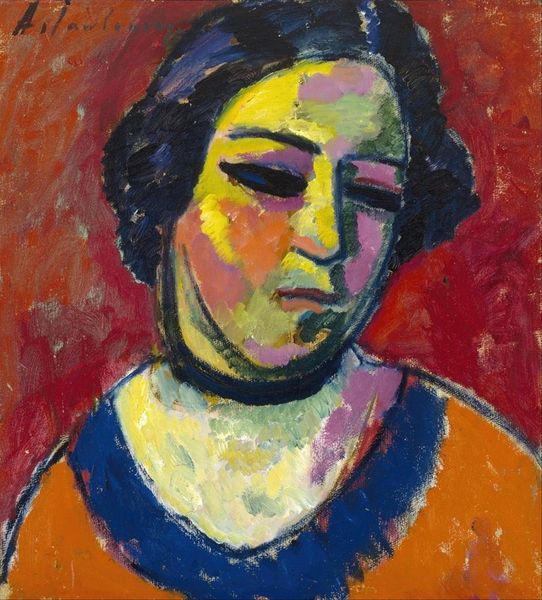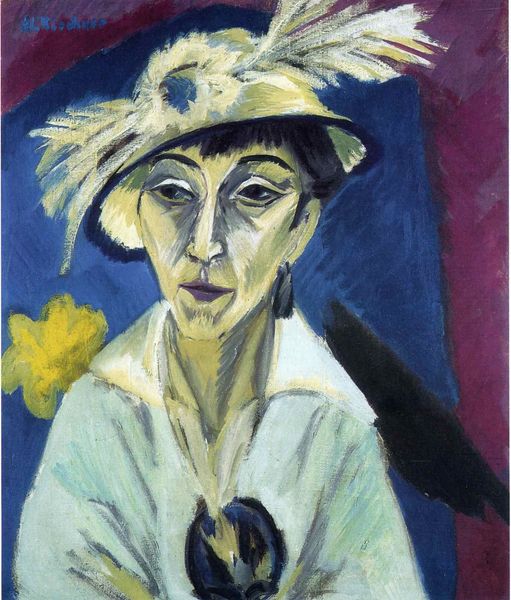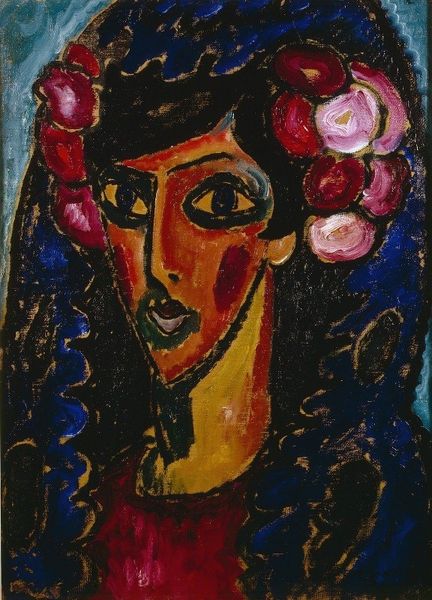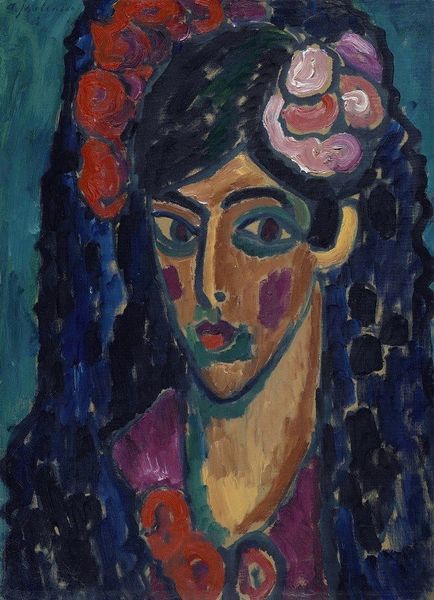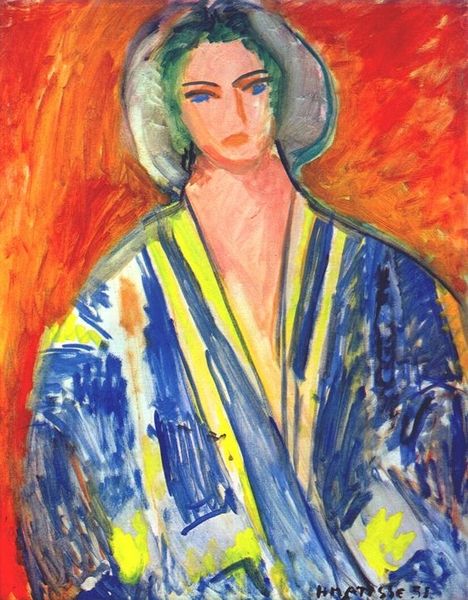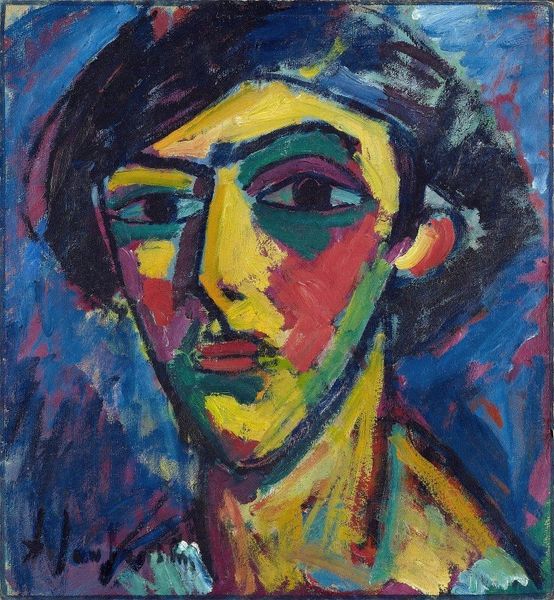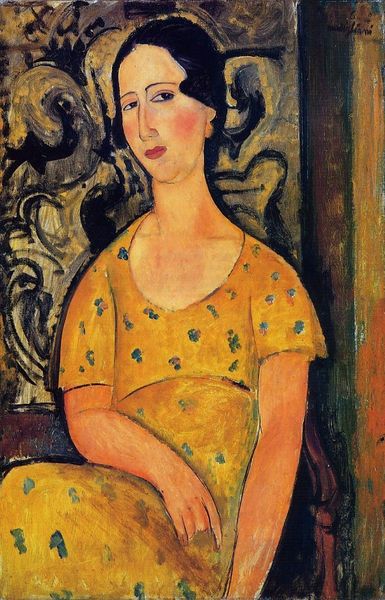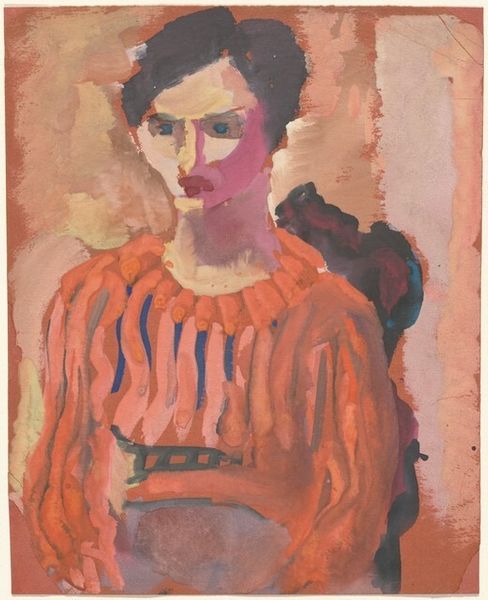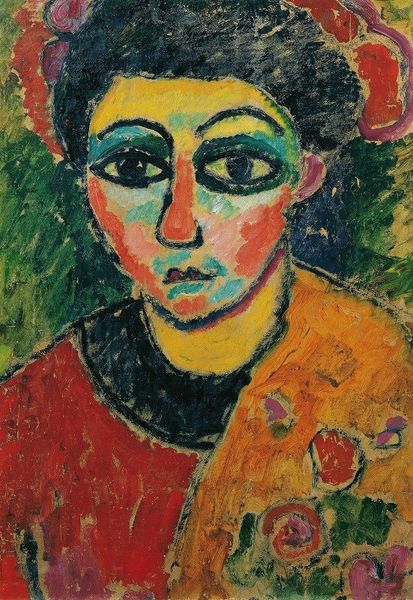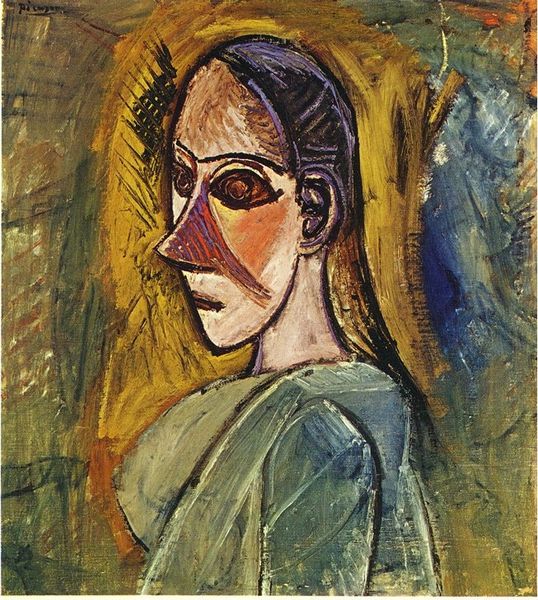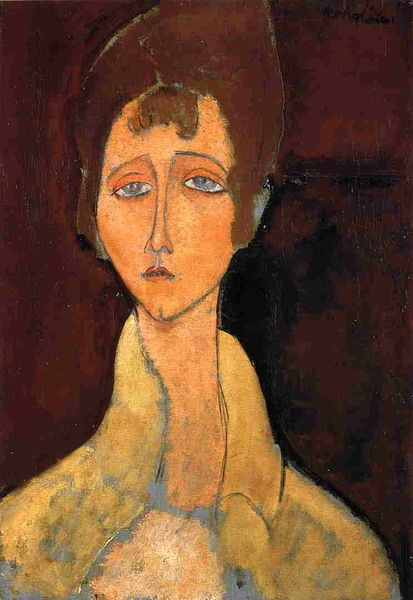
Copyright: Henri Matisse,Fair Use
Editor: Here we have Henri Matisse’s “The Yellow Hat,” painted in 1929 using oil paint. What strikes me is the contrast between the flatness of the face and the dynamism of the colors; the pose gives a strong sense of self-assurance, too. What do you see in this piece? Curator: This portrait, while seemingly straightforward, exists in a complicated dialogue. The Fauvist influence is clear through the bold color choices. Yet, think about the representation of women during this period. Matisse, while celebrated, often placed women within a male gaze. How does this woman challenge or conform to those expectations through her direct gaze? Editor: So you're saying her assuredness could be read as subversion, perhaps? Curator: Precisely. Consider the “yellow hat” itself – an article of adornment. Is it celebratory, or does it function as a mask? The sitter's direct, almost confrontational gaze unsettles traditional dynamics of portraiture. Is this a challenge to prevailing societal constraints? What do you make of the abbreviated brushstrokes and how the composition informs our understanding of power? Editor: I hadn't thought about the brushwork adding to that feeling. Now I'm also wondering about the intended audience and how they would have interpreted it. Curator: Context is crucial. This wasn't merely a pretty picture. It's a document of social negotiation, playing with class, gender, and the very act of seeing. Editor: This really complicates my initial, simple reading. Now, it makes me wonder what other subtleties I've missed. Curator: Art’s power is that it never stops asking questions, of us, of society, and of itself. Looking deeper can give a totally different meaning.
Comments
No comments
Be the first to comment and join the conversation on the ultimate creative platform.
